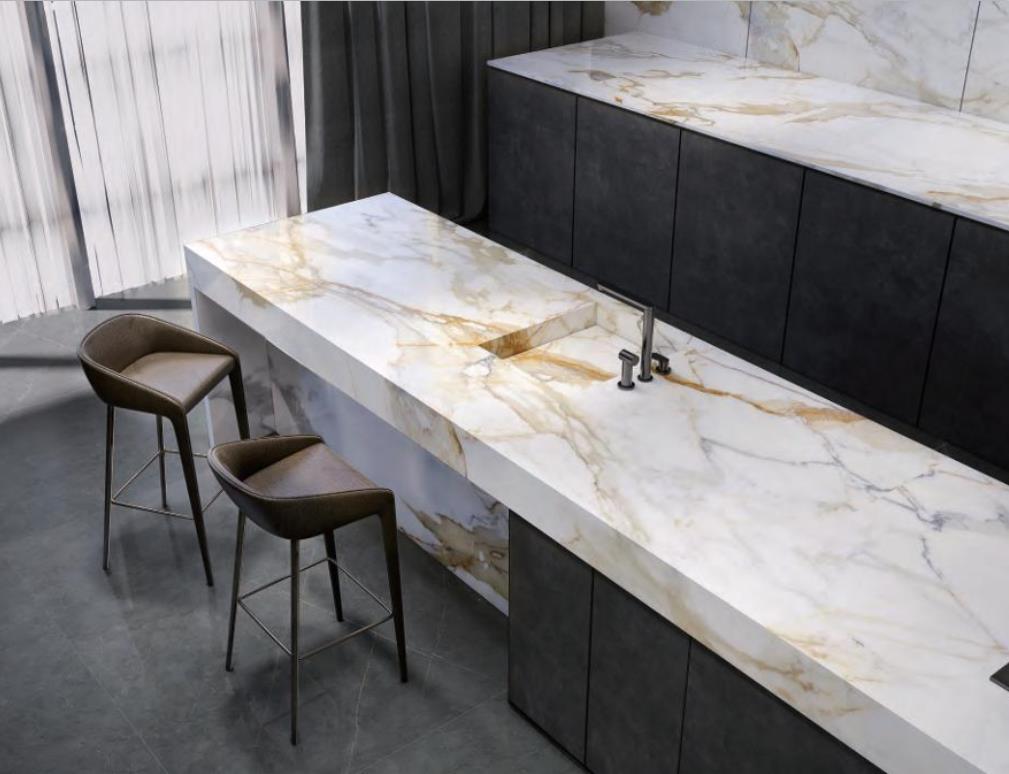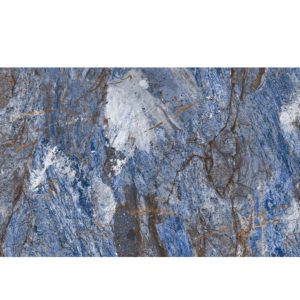Sintered stone is the mineral-heated matrix (sinter) that forms a solid, impermeable mass, which results in a surface that cannot be etched, scraped, burned, or stained. In fact, sintered stone panels are used in wall and facade applications, and also in flooring and even countertops. Typically, something sintered is made for use in an expensive kitchen counter, but there are plenty of other uses for the material, like a surface for a fireplace, a wall covering, and a floor.
Thin sintered slabs of rock can be used for building facades of furniture, kitchen cabinets, and interior and exterior wall cladding. Sintered stone costs about $60-$100 a square foot, including installation. You can expect marble countertops to run $40 to $100 per square foot installed.
Granite countertops are priced at $80 to $130 per square foot installed, so expect to pay a premium for this option over sintered rock. Quartz countertops can exceed that of sinter-fired rock, with the typical range being $50 to $200 per square foot installed. When thinking about countertops, quartz or granite are typically your first thoughts.
Granite and marble are both widely considered the two leading contenders because of their striking natural beauty and durability. Granite is an extremely strong material that can withstand scuffs and breaks, and is also resistant to heat. Even though quartz is heat resistant, there are still certain temperatures too hot for the resins that make up its composition.
Quartz is a hard, engineered surface, it is not porous, it is scratch-resistant, and does not stain easily. The mix gives quartz countertops scratch resistance, but it is not scratch-proof. Whereas, a quartz countertops can get burned marks or discoloration if exposed to sun and humidity over long periods of time.
Sinter surfaces create an illusion of natural imperfections and unique qualities. Sintered surfaces are in fact mimicking those produced by natural processes in granite. This process uses intense heat, along with other forces such as pressure and electricity, to turn naturally occurring minerals into solid, solid masses of the new material.
Costs vary depending on stone quality, design, and installation difficulties. Also, it means both materials are naturally antimicrobial, preventing the growth of bacteria and viruses. Just like two types of natural stones may share some characteristics, but they may have differences, too, artificial materials may share properties, but they may be vastly different in composition, or even made of vastly different materials.
-
1200x2700mm
Italy GoldJade Sintered Stone Slab
-
1200x2400mm
Calacatta Macchia Vecchia Sintered Stone
-
1600x3200mm
Calacatta Paonazzo Sintered Stone Slab
-
1200x2600mm
Naxos Rock Sintered Stone Slab
-
1600x3200mm
Ancient Blue Sintered Stone Slab
-
1200x2400mm
Calacatta Luxe Sintered Stone Slab
-
1200x2600mm
Bianco White Sintered Stone Slab
-
1200x2600mm
Carrara Estatuario Sintered Stone
-
1600x3200mm
Orienal Black Sintered Stone Slab
-
1600x3200mm
Emerald Green Sintered Stone Slab
-
1200x2700mm
Chile Sodalite Sintered Stone Slab
-
1200x2400mm
Carrara Ice White Sintered Stone Matt















